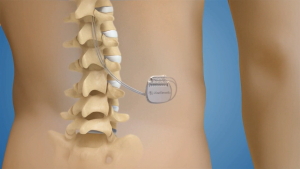The treatment of back pain has evolved significantly with the remarkable advances in the field of modern medicine. Medical innovation targets back pain, fostering advanced pain management approaches.
Advancements in diagnosis, interventions, and multidisciplinary care redefine back problem management. Exploring these aspects aids understanding modern medicine’s commitment to personalized back pain solutions
Back pain, pervasive across diverse ages and lifestyles globally, stands as one of the most prevalent medical conditions. Modern medicine has made great strides in understanding and effectively treating back pain, offering patients diverse and innovative ways to manage this debilitating problem.
CONTENT:
- The new method for treatment of back pain
- The new device for treatment of back pain
- Currently recommended treatment for back pain
- The most powerful medicine for back pain
- The safest pain medication for long-term use
The new method for treatment of back pain
High Intensity Focused Ultrasound (HIFU) therapy represents one of the relatively new methods used to treat back pain. This non-invasive method uses ultrasonic waves to treat back pain-causing conditions such as spinal neuralgia, reducing pain sensations by precisely focusing energy on the affected areas.
By using high frequencies of ultrasound, HIFU can precisely focus energy on specific areas, allowing doctors to treat back pain-causing conditions, such as spinal neuralgia, with minimal invasiveness and without affecting the surrounding tissues. The principle of operation consists in the transmission of ultrasonic waves that turn into heat in specific areas of the spine, helping to reduce inflammation and pain sensations.
This method offers non-invasive treatment, ensuring swift recovery and avoiding complications linked to traditional surgery. Furthermore, HIFU may represent an alternative for those who do not respond to other forms of treatment or who are not ideal candidates for surgery.
Although HIFU represents a promising innovation, it is important to emphasize that this treatment requires further research and extensive clinical evaluations to establish its long-term efficacy and safety in treating back pain. Consultation and evaluation by a medical specialist is essential to determine if High Intensity Focused Ultrasound (HIFU) therapy is an appropriate and safe option for each individual patient.
The new device for treatment of back pain
The new device for chronic back pain is implantable spinal neurostimulator. It stands as a remarkable innovation in treating chronic back pain, offering an advanced solution for managing persistent pain that other methods or conventional treatments cannot effectively control. This device offers hope in treatment for back pain sufferers who didn’t find relief with standard treatments.
The implantable spinal neurostimulator uses an under-skin electrical pulse generator, along with electrodes near the spinal cord or affected nerves. These electrodes emit controlled electrical impulses, which intervene in the transmission of pain signals to the brain, allowing the patient to control or reduce pain sensations.
Customizable electrical stimulation in this device adapts to each patient’s needs, granting better symptom control with therapy adjustments. This aspect allows for adaptability of therapy according to fluctuations in pain and the specific needs of the patient, thus providing greater control over symptoms.
The implantable spinal neurostimulator has evolved significantly in terms of its technology and features. Modern devices include improved sensors, personalized therapy, and mobile compatibility for easier patient monitoring and stimulation adjustment.
Currently recommended treatment for back pain
Recommended treatment for back pain can involve a number of approaches, starting with lifestyle changes, physical therapy and specific exercises to strengthen the back muscles. Physicians may prescribe medications like non-steroidal anti-inflammatory drugs (NSAIDs) or pain relievers for pain management. In certain scenarios, complementary therapies such as acupuncture or therapeutic massage might also come under consideration.
Non-invasive approaches:
1. Lifestyle changes and conservative therapies
Exercise and physical therapy: Adapted exercise program can help strengthen back muscles, improve flexibility and reduce muscle tension.
Correct posture: Adopting correct posture can reduce pressure on the spine and prevent back pain.
2. Medications for pain management
Nonsteroidal anti-inflammatory drugs (NSAIDs): These drugs can reduce inflammation and pain associated with spinal conditions.
Analgesics: May be prescribed to reduce pain sensations, helping the patient manage the discomfort.
3. Complementary therapies
Acupuncture: Acupuncture points can be used to reduce pain and relax tense muscles.
Therapeutic massage: Massage can help relax muscles and relieve discomfort associated with back pain.
Invasive or interventional options:
1. Injections
Epidural injections: May be used to administer anti-inflammatory drugs directly near the affected spinal nerves to reduce inflammation and pain.
2. Surgical therapies
Spinal surgery: Recommended for severe cases or when other methods fail, addressing spine structural issues.
The most powerful medicine for back pain
There is no single “strongest” medication for back pain, as effectiveness can vary from person to person. The effectiveness of a particular drug may vary depending on the specific cause of the pain, its severity, and the individual response of each patient.
However, in many cases, people consider nonsteroidal anti-inflammatory drugs (NSAIDs) among the most effective for managing back pain. These drugs reduce inflammation and pain linked to spinal issues like herniated discs or osteoarthritis.
NSAIDs are available in various forms such as ibuprofen, naproxen, diclofenac and others. They work by blocking the body’s production of chemicals called prostaglandins, which are responsible for the sensation of pain and inflammation. By reducing these chemicals, NSAIDs can help reduce the inflammation and pain associated with spinal conditions.
It is important to note that the use of NSAIDs must be accompanied by special attention to the dose and duration of administration, since these drugs can have negative side effects on the stomach, kidneys or other organs, especially with long-term administration or high doses .
Consult a specialist before starting or continuing NSAIDs or any back pain medication for a proper evaluation, considering your health and other regular medications.
The safest pain medication for long-term use
At recommended doses and supervised by a doctor, NSAIDs are safe for long-term pain management.
Even though NSAIDs are generally considered safe, using them for an extended period necessitates caution and regular medical monitoring. Long-term NSAID use poses risks like stomach ulcers, bleeding, and organ damage, requiring supervised use with recommended doses.
To minimize the risks associated with long-term NSAIDs, it is crucial to follow your doctor’s directions and instructions regarding dosage and duration of treatment. Note any symptoms or side effects while using these meds; seek immediate medical attention for any issues or complications.
Long-term back pain management may involve safer alternatives: other pain relievers or non-drug therapies like physical therapy, acupuncture, or tailored exercise programs.
It is important to discuss any concerns or questions about long-term pain medication use with your doctor so that you can choose the safest and most effective treatment option tailored to your specific needs. Medical monitoring and supervision are essential to ensure safe and effective long-term back pain treatment.






